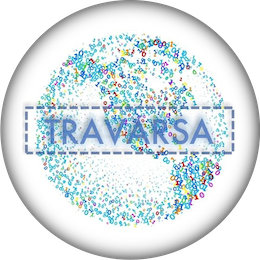Explore the world of firewalls and their diverse types, from basic packet filters....
Read MoreIntroduction of Various Databases and usage

Databases form the backbone of modern information systems, offering a wide array of solutions to cater to various data management needs. From the reliability of MySQL to the scalability of MongoDB, each database type has its unique strengths and applications. In this article, we’ll explore the introduction and usage of different databases, shedding light on their significance in today’s data-driven world.
In the digital era, databases are the cornerstone of data management. From traditional SQL databases to NoSQL solutions, understanding their roles and applications is paramount.
Databases serve as the backbone of modern data management, offering various solutions to cater to diverse needs. Let’s delve into each type of database, elaborating on their definitions, typical usage scenarios, distinctive features, and the frameworks where they are commonly used:
MySQL:
- MySQL is an open-source relational database management system (RDBMS) renowned for its reliability, ease of use, and scalability. It stores data in tables where data relationships can be established by using foreign keys.
- Usage: It is widely utilized in web development, powering content management systems, e-commerce platforms, and various data-driven applications.
- Distinctive Features: MySQL supports standard SQL for querying and managing data, offers transaction support, and provides robust security mechanisms.
- Frameworks: MySQL is commonly used with frameworks such as Django for Python, Ruby on Rails for Ruby, and Spring Boot for Java.
PostgreSQL:
- PostgreSQL is an advanced open-source RDBMS known for its extensibility, adherence to SQL standards, and strong emphasis on data integrity. It features a rich set of data types, including user-defined types and arrays, and supports complex data structures.
- Usage: It finds application in enterprise-level environments requiring complex queries, geospatial data processing, and advanced analytics.
- Distinctive Features: PostgreSQL supports custom data types, indexing methods, and procedural languages, enabling developers to implement custom functionalities tailored to their needs.
- Frameworks: PostgreSQL is commonly used with frameworks such as Ruby on Rails, Django, and Hibernate for Java.
MongoDB:
- MongoDB is a leading NoSQL database, characterized by its document-oriented model, dynamic schemas, and scalability. It stores data in flexible, JSON-like documents, allowing for seamless integration with modern application development frameworks.
- Usage: It serves as a backend for modern applications handling unstructured or semi-structured data, such as content management systems, mobile apps, and IoT platforms.
- Distinctive Features: MongoDB’s flexible schema design accommodates evolving data structures, while its powerful query language and indexing capabilities enable efficient data retrieval and manipulation.
- Frameworks: MongoDB is commonly used with frameworks such as Express.js for Node.js, Flask for Python, and MEAN/MERN stack (MongoDB, Express.js, Angular/React, Node.js).
Amazon DynamoDB:
- Amazon DynamoDB is a fully managed NoSQL database service offered by Amazon Web Services (AWS), designed for seamless scalability, low-latency performance, and high availability. It provides consistent, single-digit millisecond latency at any scale.
- Usage: It is extensively used in serverless architectures, real-time applications, and scenarios requiring predictable performance and automatic scaling.
- Distinctive Features: DynamoDB’s pay-per-request pricing model, automatic scaling, and built-in support for global replication simplify database management and optimize cost efficiency.
- Frameworks: DynamoDB is commonly used with serverless frameworks such as AWS Lambda, as well as with application frameworks like AWS Amplify.
NoSQL Databases (e.g., Cassandra, CouchDB):
- NoSQL databases encompass various types of databases, including wide-column stores, document stores, and key-value stores, designed to handle large volumes of distributed data. They offer flexible schema designs and horizontal scalability.
- Usage: Cassandra excels in write-heavy workloads and distributed environments, while CouchDB prioritizes simplicity and decentralized data management.
- Distinctive Features: NoSQL databases prioritize scalability, fault tolerance, and flexible data modeling, making them suitable for diverse applications such as IoT data management, content synchronization, and real-time analytics.
- Frameworks: Cassandra is commonly used with frameworks such as Apache Spark and Spring Data Cassandra, while CouchDB integrates well with frameworks like PouchDB and Hoodie.
In-memory Databases (e.g., Redis, Memcached):
- In-memory databases store data primarily in system memory, enabling rapid access and high-throughput operations. They significantly reduce latency and are ideal for applications requiring real-time data processing.
- Usage: They are commonly used for caching frequently accessed data, session management, and real-time analytics.
- Distinctive Features: Redis offers a rich set of data structures and advanced features like pub/sub messaging and geospatial indexing, while Memcached prioritizes simplicity and efficiency in caching operations.
- Frameworks: Redis is commonly used with frameworks such as Django and Ruby on Rails, while Memcached integrates well with PHP frameworks like Laravel and Symfony.
Time-series Databases:
- Time-series databases specialize in storing and querying data points with timestamps, optimized for handling time-series data generated by IoT sensors, monitoring systems, and financial applications. They efficiently manage large volumes of timestamped data for trend analysis and forecasting.
- Usage: They are essential for analyzing trends, detecting anomalies, and forecasting in time-sensitive domains.
- Distinctive Features: Time-series databases employ specialized storage formats, compression techniques, and indexing strategies to efficiently store and retrieve time-stamped data, ensuring fast query performance and minimal storage overhead.
- Frameworks: Time-series databases are commonly used with frameworks such as Grafana for visualization, Prometheus for monitoring, and Apache Kafka for data ingestion.
Graph Databases:
- Graph databases model data as entities (nodes) and their relationships (edges), enabling efficient traversal of complex networks and hierarchies. They are optimized for querying and analyzing interconnected data structures.
- Usage: They find applications in social networks, recommendation systems, fraud detection, and network analysis.
- Distinctive Features: Graph databases support graph-based querying languages and algorithms, facilitating advanced analytics such as shortest path calculations, community detection, and influence propagation.
- Frameworks: Graph databases are commonly used with frameworks such as Apache TinkerPop/Gremlin, Neo4j’s Cypher query language, and JanusGraph.
Database Sharding and Replication:
- Sharding and replication are techniques used to distribute data across multiple servers (shards) and create redundant copies (replicas) to improve scalability, availability, and fault tolerance. They enable databases to handle large volumes of data and traffic efficiently.
- Usage: They are crucial for large-scale applications where horizontal scaling and high availability are paramount.
- Distinctive Features: Sharding divides data into smaller partitions distributed across nodes, while replication ensures data redundancy and failover capabilities, enhancing system resilience and performance.
- Frameworks: Sharding and replication are often implemented using database-specific features and configurations. Additionally, frameworks like Apache Hadoop and Apache Spark provide support for distributed data processing and analysis.
Data Warehousing:
- Data warehousing involves centralizing and organizing data from various sources into a single repository, optimized for analytics, reporting, and decision-making. It provides a unified view of data for analysis and strategic planning.
- Usage: It is essential for generating insights, trend analysis, and strategic planning in enterprises across industries.
- Distinctive Features: Data warehouses support complex querying, data transformation, and historical analysis, enabling organizations to derive actionable insights from large datasets.
- Frameworks: Data warehouses are commonly used with business intelligence and analytics frameworks such as Tableau, Power BI, and Apache Superset.
Data Lake:
- A data lake is a centralized repository that stores raw, unstructured, or semi-structured data at scale, facilitating data exploration, analytics, and machine learning. It provides a flexible and cost-effective solution for storing and processing diverse data types.
- Usage: It serves as a unified storage layer for diverse data types and sources, fostering innovation and collaboration across organizations.
- Distinctive Features: Data lakes accommodate a wide range of data formats and enable ad-hoc querying and analysis, promoting data democratization and flexibility in data-driven decision-making.
- Frameworks: Data lakes are commonly used with big data processing frameworks such as Apache Hadoop, Apache Spark, and Apache Flink, as well as with machine learning frameworks like TensorFlow and PyTorch.
As technology advances, the diversity of databases continues to grow, providing tailored solutions for different data management requirements. Whether it’s handling structured data in relational databases or managing unstructured data in NoSQL databases, understanding the landscape of databases empowers organizations to make informed decisions and leverage the right tools for their specific needs.
Advance PR Strategies in Marketing: Benefits & Tools
Discover the power of PR in marketing. Learn about the benefits & tools....
Read MoreIntroduction to Frontend Web Development
Discover the art of Frontend Web Development – from building captivating user interfaces....
Read MorePredictive Marketing Analytics : Strategies & Benefits
Explore the future of marketing with predictive analytics. Unlock insights, optimize strategies, and....
Read MoreMastering Micro-Moments Marketing Strategy for Modern Marketers
Unlock the power of Micro-Moments Strategy. Learn how businesses can engage consumers at....
Read MoreHow to start your career as a Software Testing Engineer ?
Unlock the path to becoming a Software Testing Engineer with our guide. From....
Read MoreIntroduction of Various Databases and usage
Explore diverse databases: MySQL, PostgreSQL, MongoDB, DynamoDB, and more. Learn their uses in....
Read MoreTop 10 Digital Forensics Strategies
Unlock the power of Marketing Automation with Machine Learning. Elevate your strategies, engage....
Read MoreHow to Start a Career into Cyber Security?
Cyber Security Roadmap: Career Path. Embark on a cybersecurity career journey with our....
Read MoreOWASP (Open Web Application Security Project)
Explore how OWASP revolutionizes web security with its open resources and collaborative community,....
Read More









